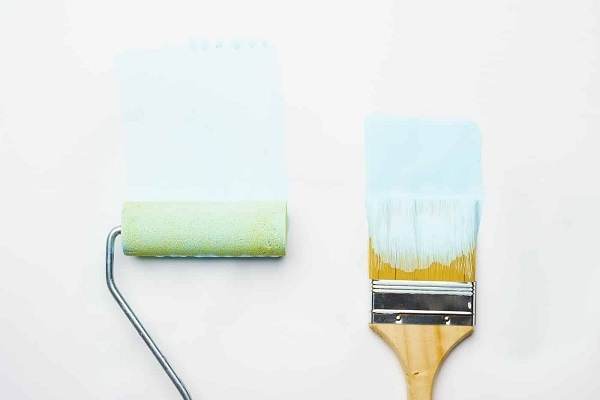Painting your home’s interior walls can be an exciting and rewarding experience, but choosing the right paint can be overwhelming.
With so many different types of paint available, each with its own unique properties and benefits, it can be difficult to know which one is best for your needs.
In this comprehensive guide, we will explore the various types of interior paints available and provide you with the information you need to make an informed decision.
Types of Which Paint is Best for Interior Walls
There are several types of interior paints available on the market, each with its own unique properties and benefits. The most common types of interior paints include:

1. Latex Paint
Latex paint is a water-based paint that is easy to apply, dries quickly, and is easy to clean up with soap and water. It is also low in volatile organic compounds (VOCs), making it an eco-friendly option.
Latex paint is available in both matte and glossy finishes and is suitable for use on walls, ceilings, and trim.
2. Oil-Based Paint
Oil-based paint is a traditional paint that is durable, long-lasting, and provides a smooth, glossy finish. It is ideal for use on wood trim and cabinets, but can also be used on walls and ceilings.
Oil-based paint is more challenging to work with than latex paint and requires solvents for cleanup. It is also high in VOCs and is not as eco-friendly as latex paint.
3. Chalk Paint
Chalk paint is a versatile, water-based paint that has a matte finish and can be used on a variety of surfaces, including walls, furniture, and cabinets.
It is easy to distress and gives a vintage, shabby-chic look to your interior. Chalk paint is low in VOCs and can be easily cleaned up with soap and water.
Factors to Consider When Choosing Interior Paints
When choosing the best paint for your interior walls, there are several factors to consider:
1. Durability
Durability is an essential factor to consider when selecting the right paint for your interior walls.
High-traffic areas such as hallways, living rooms, and kitchens require more durable paint to withstand wear and tear.
Consider using a paint with a higher sheen, such as satin or semi-gloss, in these areas to make it easier to clean.
2. Color
Choosing the right color for your interior walls is crucial to creating the desired ambiance and style in your home.
Light colors can make a room feel more spacious and airy, while dark colors can make a room feel cozy and intimate.
Consider the color scheme of your furniture, flooring, and accessories when selecting a paint color.
3. Finish
The finish of the paint you choose can have a significant impact on the final look of your walls. Matte finishes are best for hiding imperfections and creating a smooth, even look.
Glossy finishes, on the other hand, can create a dramatic, shiny effect but can also highlight imperfections.
Is latex paint better than oil-based paint for interior walls?
It depends on your specific needs. Latex paint is more eco-friendly, easier to work with, and dries faster than oil-based paint. However, oil-based paint is more durable and provides a smoother, glossier finish.
Can I use exterior paint for my interior walls?
No, exterior paint should not be used on interior walls. Exterior paint contains chemicals that can be harmful when used in an enclosed space, and it may not adhere well to the surfaces inside your home.
Can I mix different types of paint to achieve a specific finish?
It is not recommended to mix different types of paint, as they have different properties and may not adhere well to each other. Instead, choose a paint with the desired finish and sheen to achieve the look you want.
Conclusion
Choosing the best paint for your interior walls requires careful consideration of several factors, including durability, color, and finish.
With so many different types of interior paints available, it can be overwhelming to make a decision.
By understanding the properties and benefits of each type of paint, you can make an informed decision that meets your specific needs.
When deciding which paint is best for your interior walls, consider factors such as the location of the room, the amount of natural light it receives, and the style you want to achieve.
With a little research and planning, you can transform your home’s interior into a beautiful and inviting space that reflects your personal style and taste.



